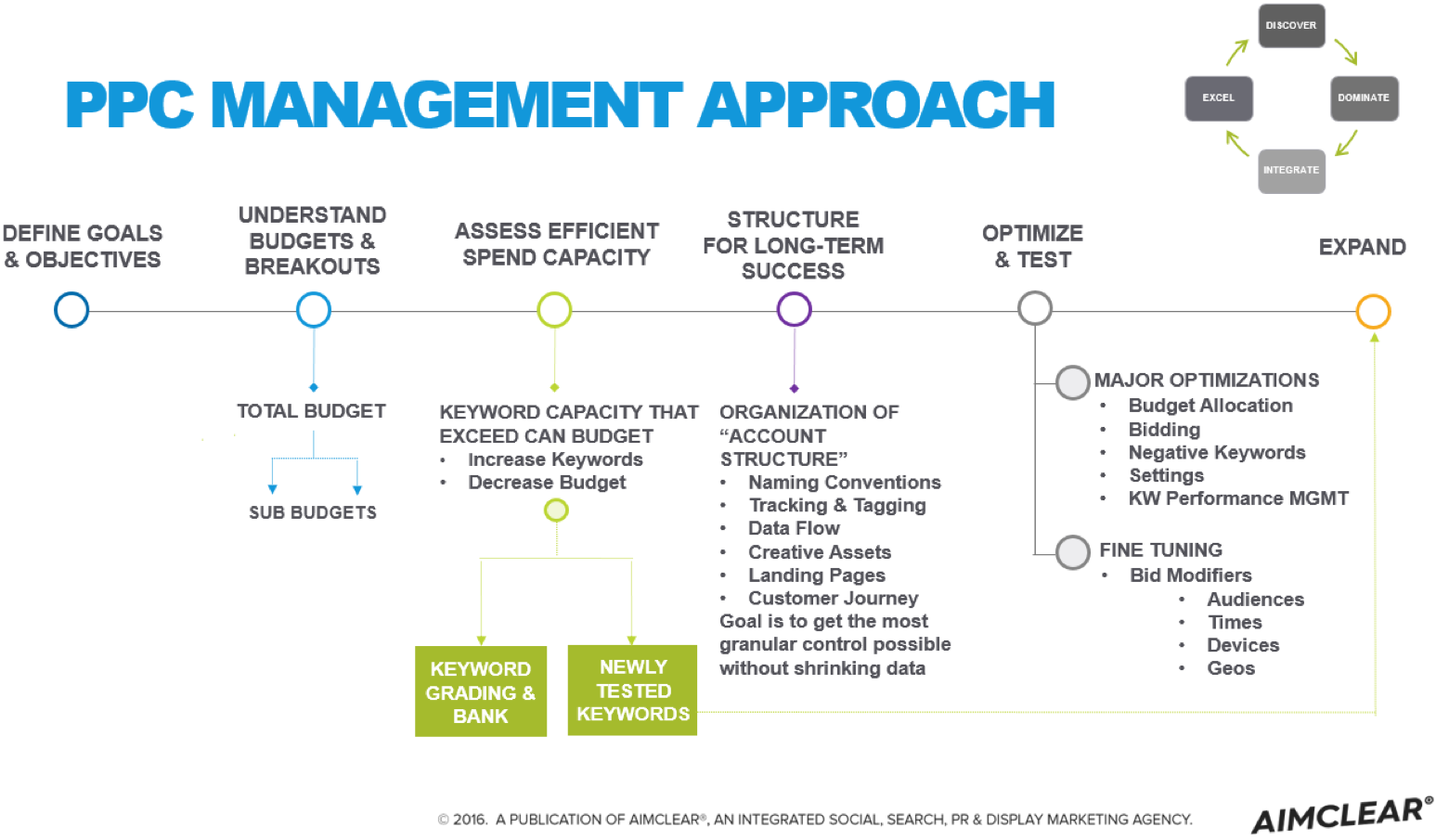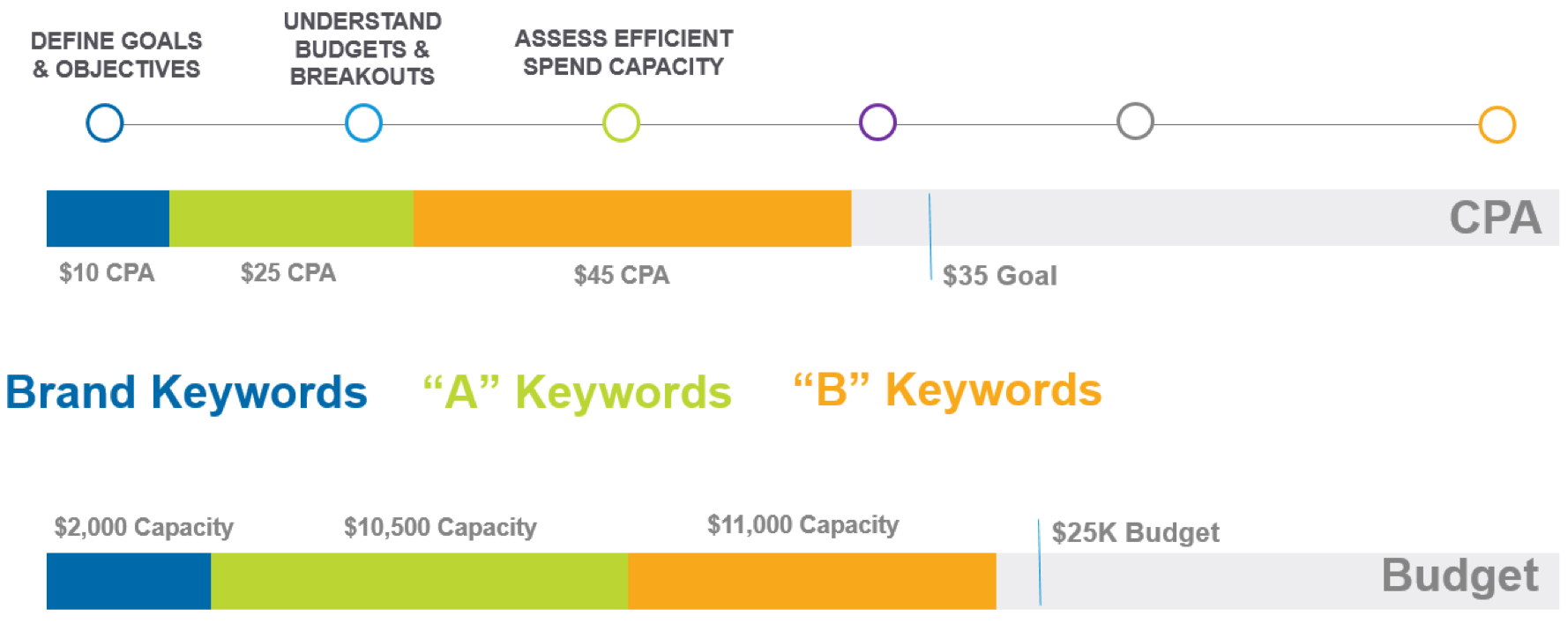Want to build an SEO
strategy that can withstand algorithm updates, growing competitors and
industry fluctuations? Columnist Jeremy Knauff explains how to do this
by rethinking your approach.

Do you want an SEO strategy that goes beyond incremental growth? One
that is defensible by being inherently more difficult for your
competitors to replicate? And one that sets you apart from your
competitors? Then you’re in the right place, because that’s exactly what
we’re going to outline here today.
First and foremost, you need to understand the difference between a
strategy and a tactic. Don’t feel bad if you’re unsure of the
difference, because I frequently hear smart people use both words
interchangeably despite the fact that they have completely different
meanings.
Here’s an easy way to remember: a strategy is a plan to achieve a
specific competitive advantage, while a tactic is a method used to
achieve it.
If that’s still a little confusing, let’s use Google as an example.
Their strategy was to become synonymous with search in order to dominate
the market, and today, it’s clearly evident that they’ve been
successful. Some of the tactics they used to achieve that included:
- developing a more effective link-based algorithm that, at the time,
was less susceptible to manipulation than simple algorithms based on
content alone.
- funding their growth via AdWords, which simultaneously put their
brand in front of more eyeballs and got more people (especially website
owners) involved with their products.
- releasing Gmail as a free service to compete with Microsoft’s
Hotmail, which put their brand in front of more eyeballs and got more
people involved with their products.
- acquiring Urchin and renaming it Google Analytics, which gave them
significantly more data points to refine their algorithm. It also put
their brand in front of more eyeballs (website owners again) and got
more people involved with their products.
Are you seeing a pattern here yet? Every major business decision
(tactic) made by Google played a direct role in achieving their goal
(strategy). As a result, it’s been years since any other search engine
has even put a dent in Google’s market share of search.
Now that we’re clear on the difference between a strategy and a
tactic, we’re going to explore three strategies you can use to dominate
your market, along with the tactics necessary to do so.
1. Banish conventional thinking on keyword research and content development
It’s easy to think, “I sell widgets, so I want to rank for
‘widgets.'” But it’s also lazy to stop there. Sure, if you sell widgets,
you absolutely should work to rank for the term “widgets,” as well as
variations of the term, such as:
- [color] + widgets
- [brand] + widgets
- [size] + widgets
But no matter how many variations you include, you’ll only scratch
the surface of potential topics to drive organic search traffic. That’s
why it’s essential to go beyond conventional thinking and identity a
greater number of lucrative, relevant topics — many of which will
deliver organic traffic faster, with less effort, than the obvious
keywords that everyone else is competing for
Here are a few unconventional tactics to diversify your keyword research and content development.
Ancillary products and/or services
Do customers use your widgets as a part of another machine? Do they
need a specific tool to install or use them? Do your widgets require
other products, such as lubrication or calibration devices, to function
property? If you answered “yes” to any of those questions, you’ve just
multiplied potential topics exponentially!
Writing about the products and/or services that support or are highly
relevant to your own opens a whole new realm of keyword phrases. To be
more clear, the concept of “keyword phrases is dead,” as I explained in a
recent article on the role of
artificial intelligence in SEO, so perhaps a better word would be “topics.” Think of it as buckets of topically themed words.
There are a few hidden benefits of producing content on ancillary products and services:
- These other companies aren’t in competition with you, so they will
be more likely to share and link to your content — especially since it
helps promote them.
- You will attract visitors at an earlier stage in the buying process.
- Providing more information across a broader range of topics within
your niche will help you appear more knowledgeable and authoritative.
Let’s use the SEO industry as an example. In this case, ancillary
products and services for which you could produce content will mostly be
marketing-related. These products/services might include:
- domains
- web hosting
- premium WordPress themes and plugins
- website backup services
- email marketing services
- CRM software
- productivity tools
- CDN services
- printing
- social media tools
- podcasting services and equipment
- call tracking
- reputation management
- analytics
- conversion optimization
- web design
Interview industry leaders
Unless you’ve spent the last few decades working as a contract
assassin for the CIA, you’re probably excited about having your name
mentioned in the media. That’s true whether it’s Forbes, The Huffington
Post, or even a tiny industry publication, and that feeling almost never
goes away.

You can use this to your advantage by interviewing industry leaders,
which gives you a way to produce amazing content, and the best part is
that your interviewees produce most of it for you! It also makes you
appear more trustworthy and authoritative in the eyes of your audience,
because they begin to associate you with the leaders in your industry.
An added benefit is that you actually will rise to their level faster,
but the benefits don’t stop there, because it can also help you reach a
new, larger audience because the interviewee will share and/or link to
their own interview. And this tactic gives you a way to add value from
the beginning of the relationship, which separates you from the majority
of people who contact them asking for something.
You don’t need to be Oprah to effectively interview the leaders in
your industry. Here are a few things you can ask them about to get the
ball rolling:
- Their background, education and work experience
- How and why they chose to do what they do (The why is especially important)
- Books they’ve written or recommend
- Their mentors, heroes or role models
- Podcasts they host or recommend
- Events they speak at or attend as guests
- Publications they contribute to
- Products or services they recommend
From a technical perspective, I recommend recording the call so that
you don’t have to worry about keeping up as you type or write. Just let
the software do the work, then hire a transcriber on Fiverr to type it
for you. This helps you to be efficient and respectful of the
interviewee’s time.
Review competing products/services
It may sound crazy, but writing content about your and their products
and/or services can create tremendous opportunities for you, as long as
yours are superior in some way. In fact, this tactic was the foundation
for one of my most successful SEO campaigns early in my career.
It’s important not to bash your competitors, because that will just
make it look like you’re trying to overcompensate. Instead, clearly and
objectively explain the differences, highlighting the pros and cons of
each choice, allowing visitors to make an educated decision based on the
facts.
When using this tactic, you’ll need to produce two levels of content
and build both internal and external links to that content. What I’ve
found to work well is creating a parent page that provides a general
comparison of your products/services to those of your competitors,
followed by child pages comparing each feature individually. Each of
these child pages should contain an internal link to the parent page, as
well as to the other child pages where relevant. I wrote a blog post on
how to set up WordPress permalinks that explains this exact structure in detail, so you can use that as a step-by-step guide.
Consider how customers will search
Thanks to familiarity with technology, proliferation of mobile
devices and the growth of artificial intelligence, the structure of
searches has changed dramatically. Today, instead of opening Google and
entering the search phrase “home builders,” a searcher may literally
ask Google,
either through their Android device or Google Home, “Which home builder
in Tampa builds modern-style homes between $400,000 and $600,000?”

This offers tremendous value, both for searchers and for business
owners. Put yourself in the shoes of the searcher for a minute — do you
really want to go through several pages of blue links to find a handful
of home builders who provide what you’re looking for? Now put yourself
in the shoes of the home builder — do you want to answer inquiries from a
bunch of people who are looking for a different style of house than you
build?
When you produce content, do so with the understanding that searchers
are using longer, more complex queries and search engines are using
artificial intelligence to analyze the content on your page, along with
dozens, hundreds, or even thousands of additional data points to provide
the single answer most likely to satisfy the searcher.
To accomplish this, you need to get out of your own head and into the
heads of your customers. Find out what questions they have. What words
do they use when talking about your industry, products or services? How
well do they understand industry terminology? Go beyond the keywords
themselves and get down to the thought process that would bring someone
to your website.
For example, while an HVAC company would certainly want to rank for
the term “air conditioning repair,” especially since we’re approaching
summertime here in Florida, a query that would bring a potential
customer to them earlier in the buying process might be something like,
“why does my ac smell weird.” When a searcher finds out that the smell
is caused by stagnant water and they’re already on the website of the
HVAC company that answered their question, who do you think they will
call first?
2. Build your industry’s hub
This is going to take a lot of time and effort, because it requires
you to build an entirely new website and fill it with loads of
outstanding content in order to become a hub for your industry.
When it’s executed successfully, you’ll have the opportunity to hold
multiple positions in the search results, you’ll have a powerful and
relevant website to link to your primary website from, and you’ll have
an independent platform to further improve your own authority, expertise
and trust. It’s important to mention that
you must be extremely careful
when linking from one website you own to another website you own,
otherwise you risk being flagged for manipulative linking practices,
potentially damaging both URLs.
In order for this strategy to be successful, the new website needs to become
the absolute authority on your industry.
The idea here is that while continuing to improve your primary website,
you will simultaneously build a second website that will contain
information and resources like:
- industry news
- industry specific business advice
- laws that pertain to your industry
- interviews with industry leaders
- forms, templates and other documents
- resources and tools
- trade publications (web, print and audio)
- trade organizations and networking groups
- industry events
Basically, you want visitors to be able to find anything related to
your industry here. In order to maximize this strategy, you need to give
visitors a reason to return frequently and to send other people there. A
members’ directory is a great way to do that, and a social network is
an even better way. Imagine if you could create your industry’s version
of LinkedIn or Facebook, so that visitors can friend their industry
contacts and receive updated on their activity — how powerful would that
advantage be over your competitors?
While you will have to produce a tremendous amount of unique content
for this website, you can recycle at least some of the research
conducted for content on your primary website, but I would recommend
assigning different writers for each website to reduce similarities.
3. Become an influencer
I know, you’re probably thinking it’s easier said than done, right?
But you can do it if you’re willing to put in the hard work that most
others won’t, and it’s well worth the effort, because once you’re a
recognized leader in your industry —
especially within your target market,
you won’t have to work nearly as hard to earn exposure and links. In
fact, when done well, you can actually get your target market to help
promote you and your company.
I’ll share a perfect example.
I’ve been in the digital marketing industry for 18 years, so I’m well
known here, but I’ve recently started focusing on providing our digital
marketing services to businesses in the construction industry, where
initially, no one knew me. I set out to change that, and as a result of
my efforts, I was asked to become a contributor for two large
construction publications and was recently quoted at length in The
Huffington Post about how
military veterans are helping to solve the construction industry’s hiring challenges.
I was even able to get that reporter to include several influential
people I knew from the construction industry in that article, which
created tremendous exposure for them in a top-tier publication.
I didn’t ask them for anything. I didn’t say, “If you do this for me,
I’ll do that for you.” I simply encouraged the reporter to include them
because their opinions on the topic were relevant and valuable. It
improved the story for the publication’s audience.
But here’s what happened as a result — I immediately became more
valuable to those people, and they immediately shared the article with
their contacts. (Remember we talked earlier about how everyone loves
positive media attention?) Now, instead of me telling people in my
target market how great I am, the people they already know and look up
to are doing it for me. Here’s the counterintuitive part — I didn’t even
talk much about my company or what we do in the article.
And that particular article only scratches the surface, because in
addition to being quoted regularly by business publications like Forbes,
The Huffington Post and Fortune, I now have the opportunity to
regularly demonstrate my expertise to my target market through their own
trade publications. You simply can’t buy that kind of trust.
So, how do you become an influencer?
I’ve been at this for a long time, however, when I reach out to
someone I don’t yet know, the process is still exactly the same as it is
for someone who is starting from scratch. The key is to add value early
and often.
In other words, never do this:

It’s all about building relationships and adding value long before
ever asking for anything. I personally know a lot of the people you
would consider “famous” in our industry. They know they can ask me for
help any time they need it, and often, when I hear they’ve run into a
problem, I offer to help. It’s not a “do this for me and I’ll do that
for you” thing, it’s more a matter of liking the people in my industry
who I work with often. And they would do (and have done) the same for
me. I’ve known some of these people for over a decade before ever asking
for a favor, and I’ve known some longer but have never asked for
anything.
That even applies to a lot of people who are technically my competitors. Last year
I was interviewed on Webcology,
and between me and the two hosts, Dave Davies and Jim Hedger, there
were three different digital marketing agencies on the show.
Within an industry, people talk, so if you become known as a genuine
person who always seeks to add value, you tend to get a lot farther a
lot faster. Plus, it’s the right thing to do, and it makes you feel good
anyway.
Now let’s get down to the details…
The first step is to create a list of the influencers you admire and
respect — don’t just look at the size of their audience. Select
influencers who are relevant to your target market and who share views
similar to yours.
Next, follow them — but not in a creepy way. Subscribe to their blog
and email newsletter. Follow them on Facebook, Twitter, Instagram and
other social networks. If you want to be thorough, you can even set up a
Google News Alert for both their name and company name.
Then start engaging with them. If they share a piece of content you
think your audience would find valuable, share it. Encourage your
audience to follow them. Ask them questions and answer theirs. Be the
first to post a worthwhile comment on their blog posts (not “Nice post!”
or any other such nonsense). Link to their posts from your own.
I think you get the idea.
Once you’ve established a relationship with the influencers on your
list, you can build a new list and start this process all over, but
continue nurturing the old relationships, too. It’s important to
remember not to look at the influencers on your list like a goal to be
checked off. While you do want them to engage with you and share your
content, if that is your only goal, don’t waste their time or your own.
People will realize you’re using them, and that will will hurt both your
personal and company brand.




















 Do you want an SEO strategy that goes beyond incremental growth? One
that is defensible by being inherently more difficult for your
competitors to replicate? And one that sets you apart from your
competitors? Then you’re in the right place, because that’s exactly what
we’re going to outline here today.
Do you want an SEO strategy that goes beyond incremental growth? One
that is defensible by being inherently more difficult for your
competitors to replicate? And one that sets you apart from your
competitors? Then you’re in the right place, because that’s exactly what
we’re going to outline here today. You can use this to your advantage by interviewing industry leaders,
which gives you a way to produce amazing content, and the best part is
that your interviewees produce most of it for you! It also makes you
appear more trustworthy and authoritative in the eyes of your audience,
because they begin to associate you with the leaders in your industry.
An added benefit is that you actually will rise to their level faster,
but the benefits don’t stop there, because it can also help you reach a
new, larger audience because the interviewee will share and/or link to
their own interview. And this tactic gives you a way to add value from
the beginning of the relationship, which separates you from the majority
of people who contact them asking for something.
You can use this to your advantage by interviewing industry leaders,
which gives you a way to produce amazing content, and the best part is
that your interviewees produce most of it for you! It also makes you
appear more trustworthy and authoritative in the eyes of your audience,
because they begin to associate you with the leaders in your industry.
An added benefit is that you actually will rise to their level faster,
but the benefits don’t stop there, because it can also help you reach a
new, larger audience because the interviewee will share and/or link to
their own interview. And this tactic gives you a way to add value from
the beginning of the relationship, which separates you from the majority
of people who contact them asking for something. This offers tremendous value, both for searchers and for business
owners. Put yourself in the shoes of the searcher for a minute — do you
really want to go through several pages of blue links to find a handful
of home builders who provide what you’re looking for? Now put yourself
in the shoes of the home builder — do you want to answer inquiries from a
bunch of people who are looking for a different style of house than you
build?
This offers tremendous value, both for searchers and for business
owners. Put yourself in the shoes of the searcher for a minute — do you
really want to go through several pages of blue links to find a handful
of home builders who provide what you’re looking for? Now put yourself
in the shoes of the home builder — do you want to answer inquiries from a
bunch of people who are looking for a different style of house than you
build?